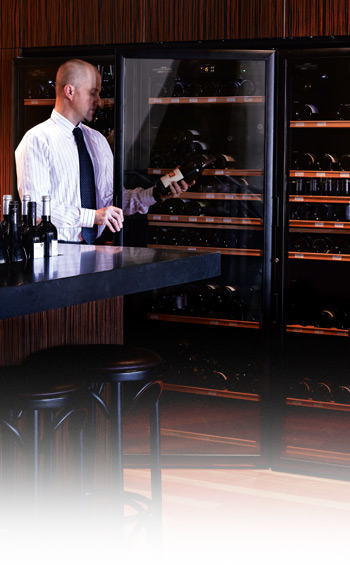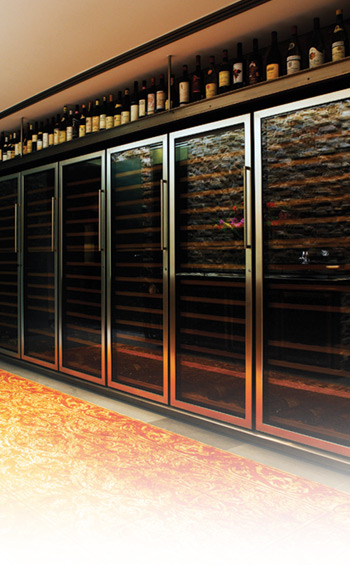Useful Resources

French Wines
Alsace
10ºC
Beaujolais
13ºC
Sweet White Bordeaux
6ºC
Dry White Bordeaux
8ºC
Red Bordeaux
17ºC
White Burgundy
11ºC
Red Burgundy
18ºC
Champagne
6ºC
Jura
10ºC
Languedoc-Roussillon
13ºC
Provence Rosé
12ºC
Savoie
9ºC
Dry White Loire Wines
10ºC
Sweet White Loire Wines
7ºC
Red Loire Wines
14ºC
Rhône Wines
15ºC
Sweet South-West Wines
7ºC
Red South-West Wines
15ºC
Australian Wines
Cabernet Franc
16ºC
Cabernet Sauvignon
17ºC
Chardonnay
10ºC
Merlot
17ºC
Small Grape Muscat
6ºC
Pinot Noir
15ºC
White Sauvignon
8ºC
Semillon
8ºC
Shiraz
18ºC
Verdhelo
7ºC
Others
Californian
16ºC
Chilean
15ºC
Spanish
17ºC
Italian
16ºC
*Provided as an indicator only.

Wine is a highly complex product, requiring long and gentle development and needs specific conditions in which to reach its full potential.
When wines age, two different processes are involved:
The first is the softening of some of the "taste" components such as acidity and tannin. This is caused by the gradual growth of the size of the molecules in the wine (polymerization). Some molecules can even reach a large size, creating sediments (the lees). This is, by all means, NOT a sign of poor quality or damage. Quite the contrary, but it is why old wines should be decanted.
The second is the changing of the "grapey" flavor. This process causes the fresh fruity character of a young wine to evolve into more complex flavors, sometimes totally different from the original. For instance, a young Hunter Semillon with a zingy lemon aroma will change into toasty honey flavors, the flinty flavor of a young chardonnay will turn into peach or custard apple, a Coonawarra cabernet with a blackcurrant and green olive character when young, will age into cedar and cigar box.
The main thing is to let these two processes develop together in harmony and at coordinated speed. One thing to keep in mind is that both processes speed up when the temperature rises and slow down when the temperature drops.
All wine is stored at the same temperature, only the temperatures for serving and wine tasting can vary depending on the type of wine.
This being the case and just like the natural caves used by wine producers, it is not the exact temperature that is important, but its constancy. In other words, as long as the temperature of your cabinet is between 10 and 14℃, your wine will be stored in perfect conditions if the temperature is not subject to any significant fluctuation.

